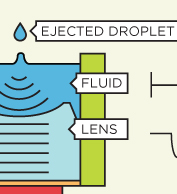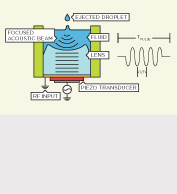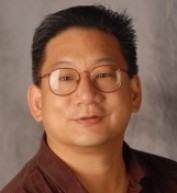STILLPOINT Archive: last updated 12/18/2009
David S. Lee, associate professor of physics, has recently logged his ninth U.S. patent, #7481511: “Droplet dispensation from a reservoir with reduction in uncontrolled electrostatic charge.” Dr. Lee’s explanation follows:
“In the pharmaceutical industry the ‘drug discovery’ process involves hundreds of thousands or even millions of miniature experiments. At the last company I worked for, LabCyte, we developed a technology that allowed precise dispensing of very tiny volumes of liquids—as tiny as one picoliter (10^-12 liters)—and placing them, without ever touching the fluid, at precise locations for mixing with other fluids. This kind of precision fluid handling, ‘noncontact acoustic drop ejection,’ allows companies to do more experiments more quickly with less material and is intended to accelerate the pace of discovery of new drugs.
“These tiny droplets are dispensed from within a plastic ‘wellplate,’ which looks like a stack of index cards and has 1,536 individual wells in it. Droplets are ejected upward out of particular wells and into the wells of an inverted receiving plate that is moving rapidly overhead (the relative speeds can be more than 50 m.p.h.). The wind shear between plates causes them to become charged. Think of Saran Wrap and how it becomes charged as you tear it from the roll. This too is caused by shear forces, which strip an electron from one surface of the plastic as the layers are unrolled. The charged plastic wrap then gets attracted to your shirt or hand—or itself.
“A similar thing happens with the plastic wellplates as they pass by each other at high speeds. An ejected droplet is then subjected to electrostatic forces as it passes by the charged wellplates. This can cause droplets to be delivered to the wrong well, resulting in contamination or misinterpreted experiments. So that’s what the patent is for: a method to control the charging of the plates and droplets that were ejected.”
To learn more about focused acoustics or any of the other fascinating projects going on in physics and engineering at Gordon, contact Dr. Lee at [email protected].


